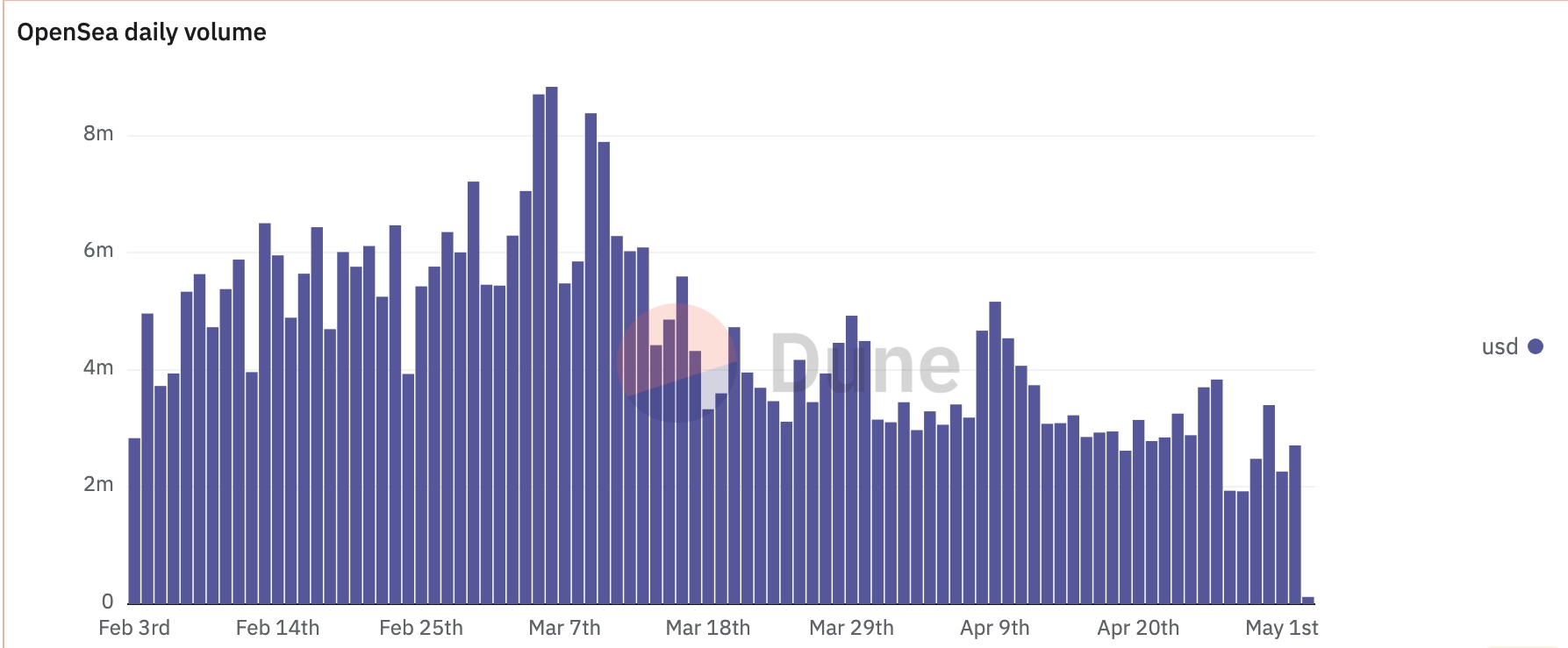NFTs are dead. Data shows that the Google volume of keywords like ‘NFT’, ‘Bored Ape Yacht Club’, and ‘Mutant Ape Yacht Club’ has continued to dwindle even as Bitcoin sits near its all-time high.
NFT volume has tumbled
Most importantly, data reveals that the volume of NFT sales has crumbled to levels never seen since the industry was in its infancy. According to CryptoSlam, Ethereum handled sales worth about $5.5 million in the past 24 hours. There were just 4,090 buyers and 3,098 sellers.
Ethereum has handled just $213 million in the past 30 days, a 51% drop from the same period in April. While this figure is high, it is significantly lower than what the network used to handle in the past. Also, $186 million of this figure is wash volume, a situation where people trade among themselves.
Ethereum is not the only network that is struggling. Solana handled about $2.8 million in the past 24 hours and over $124 million in the past 30 days, a 45% drop. Bitcoin, which became a popular name in the industry because of its Ordinals product, handled just $421 million in the past 30 days, a 45% crash.
The same is happening among other blockchains like Immutable X, Flow, Avalanche, Gala, The Sandbox, and Decentraland. Altogether, NFT sales have tumbled by over 41% in the past 30 days to over $907 million.
As a result, most NFT companies like OpenSea have seen a sharp decline in daily traded volume. Data by Dune Analytics shows that the network handled just $2.7 million on May 2nd, down from $8.8 million at its peak in March.
The number of OpenSea’s monthly active users has dropped to just 74k, down from a peak of 544k in 2021, meaning that the company has a real chance of going bankrupt.

Notably, NFTs did not benefit substantially in the last crypto bull run that saw Bitcoin surge to a record high of over $73,000 and Ethereum retest $40,000. The total market cap of all cryptocurrencies soared to almost $3 trillion.
Why NFTs are dead
The main reason why NFTs have died is that the industry could not replicate the traditional art market, which is still growing. It also became a scam as people found it to be an easy way to make a quick buck.
Further, the sector became increasingly oversaturated. Today, there are thousands of ETF collections in the market, including from the likes of Donald Trump.
The main reason why the art market has thrived for centuries is that the number of great artists has been quite small over the years. Some of the best ones include the likes of Leonardo da Vinci, Michelangelo, Rembrandt, and Vermeer.
These are iconic figures whose work will continue to be treasured for centuries to come. As a result, their creations will continue to be in demand, which will push their prices higher.
With NFTs, however, anyone can be an artist, especially in the era of artificial intelligence. Indeed, a closer look at some of the most recent NFTs shows that they have been created using ChatGPT and other image generator tools.
Further, the NFT market became rife with wash sales. A wash sale is a situation where a trader sells an NFT and then buys a similar one within a short period. As mentioned above, most of the NFT transactions today are wash sales.
Altogether, the NFT industry died because these tokens, including popular collections like Bored Ape Yacht Club (BAYC) became almost worthless. That explains why the floor prices of most NFTs has continued to drop.









